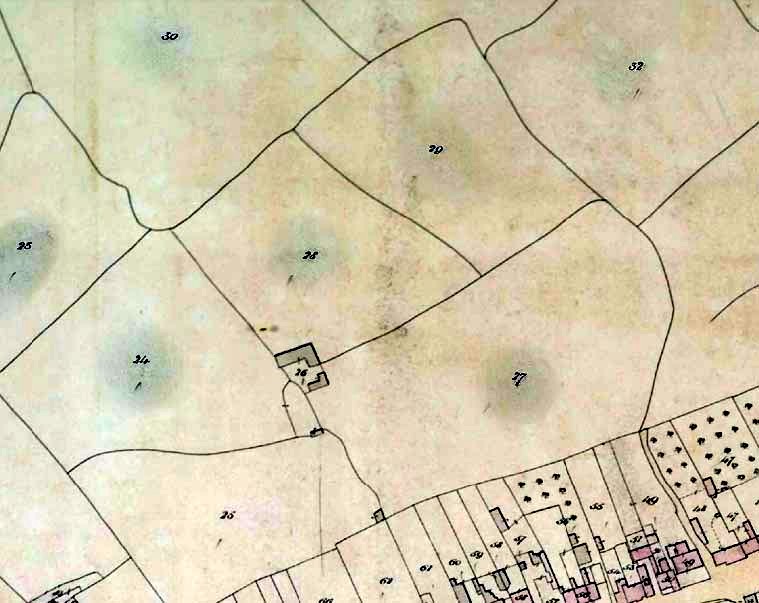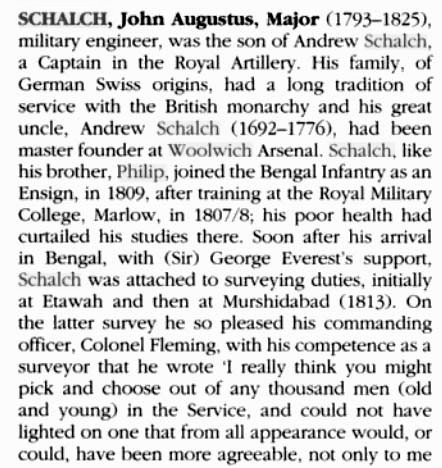A History of St. Andrew`s Church, Charmouth
23May 1861
Within the last 8 months several important alterations have been made in our Parish Churvh. A very handsome Caen Stone Alterpiece has been erected, the entire edifice,wig the exception of the Gallery, seated a new, all the sittings on the being open and free. Two beautiful stained glass windows have been put in the north aisle, given by Mrs Stuart, proprietress of Schalch's farm, Charmouth and of. Stonebarrow Farm, in the adjoining parish of Stanton St Gabriel's. Mrs Stuart has been a liberal contributor for carrying out other material improvements.
The font in memory of Mary Napier Stuart - widow of Daniel Stuart of Wykham Park, Oxon - erected by her daughters Mary and Catherine Stuart and Lady Baynes.
The Court after Mary Elizabeth, died in 1924 was inherited by her sister, Anna Vernor (Daisy) Schalch who on her death in 1932 ended the long era of ownership by the family.

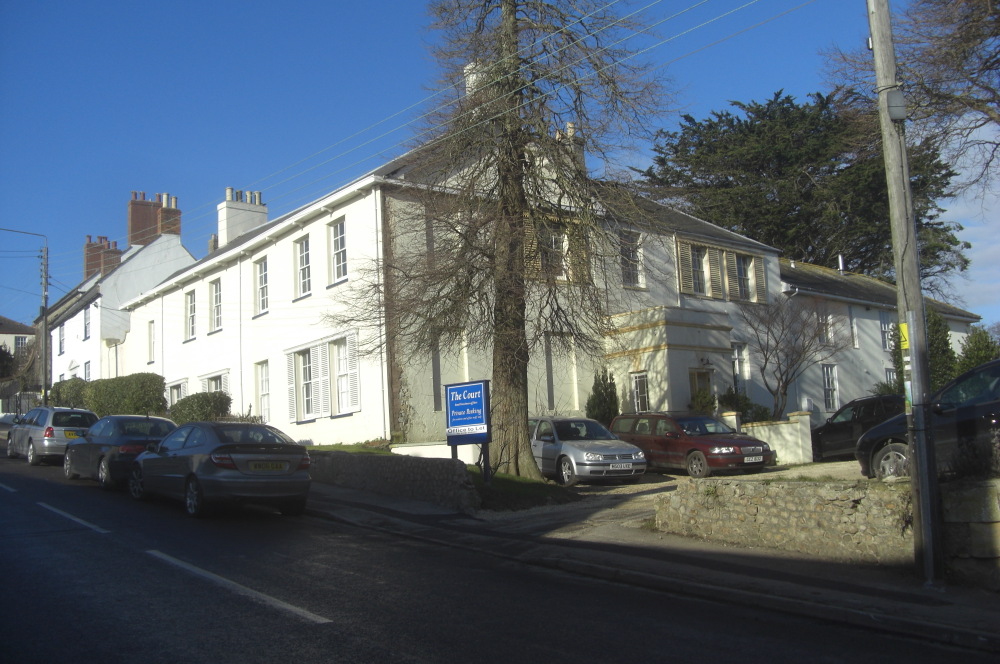
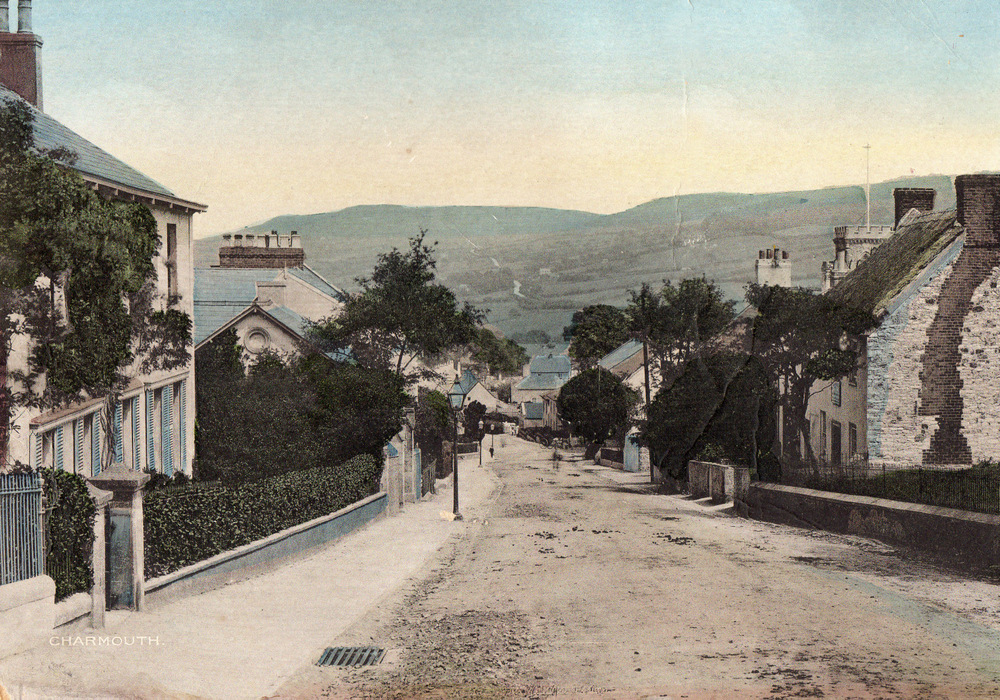
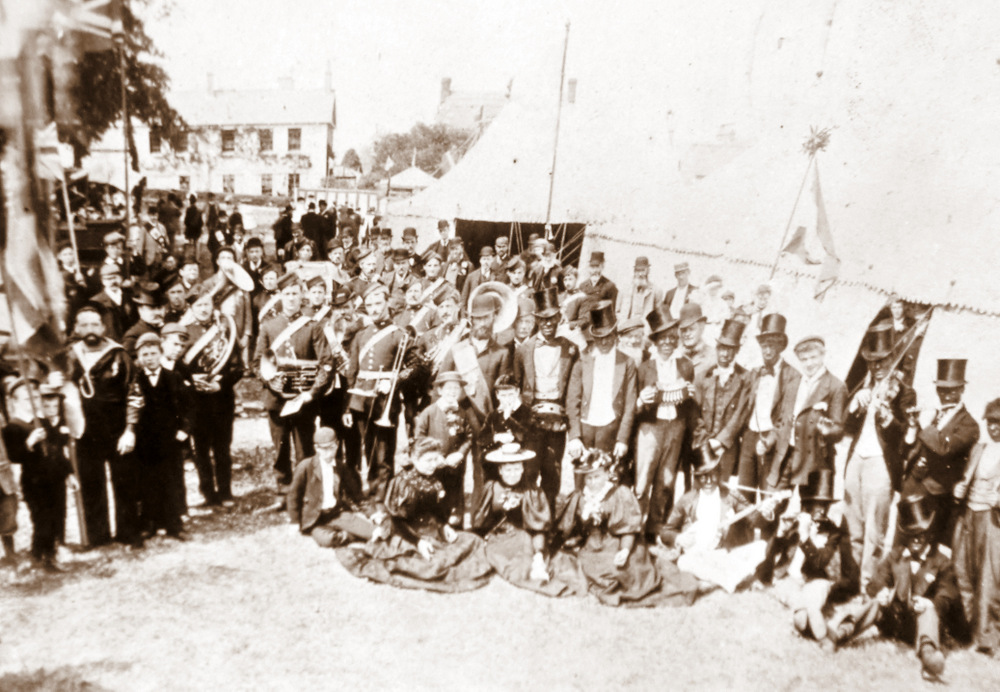
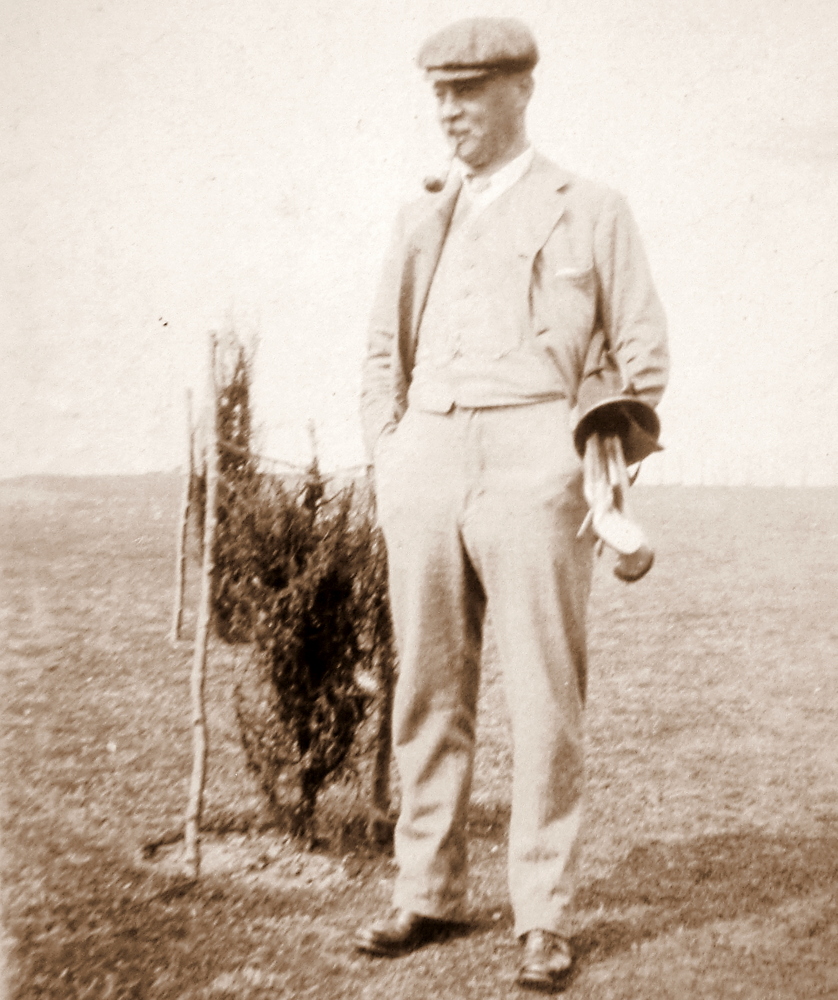
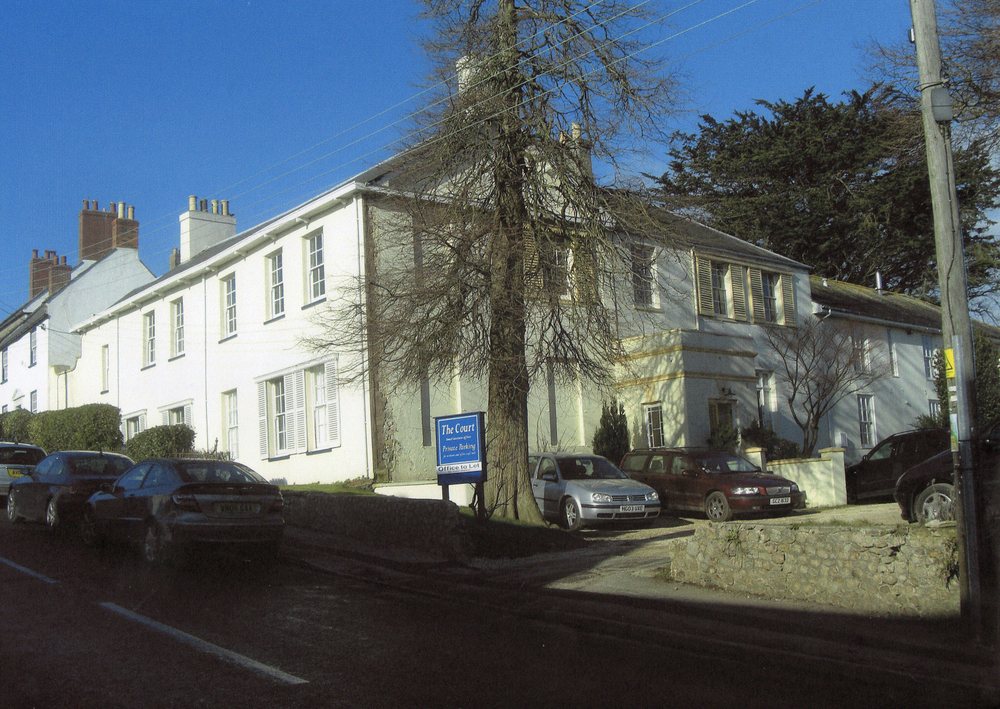

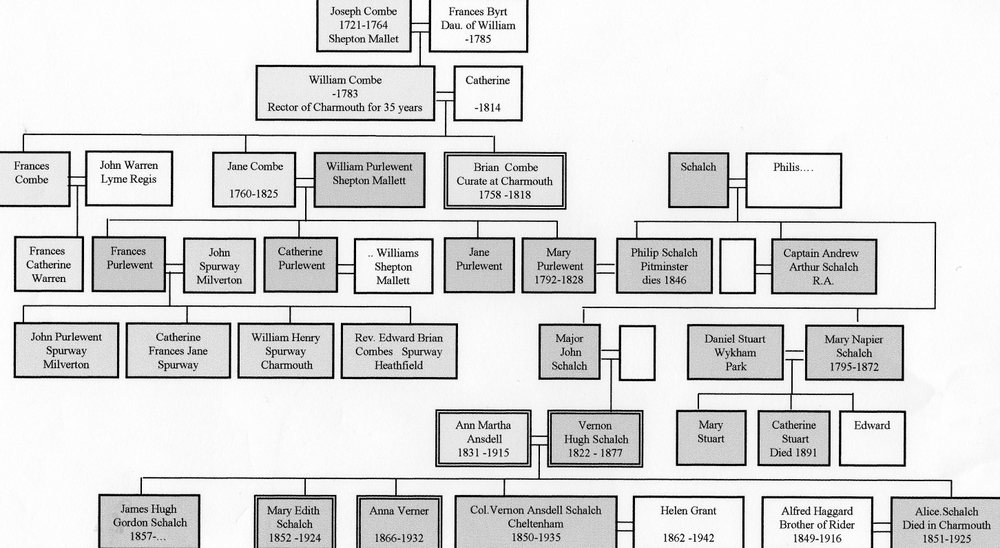
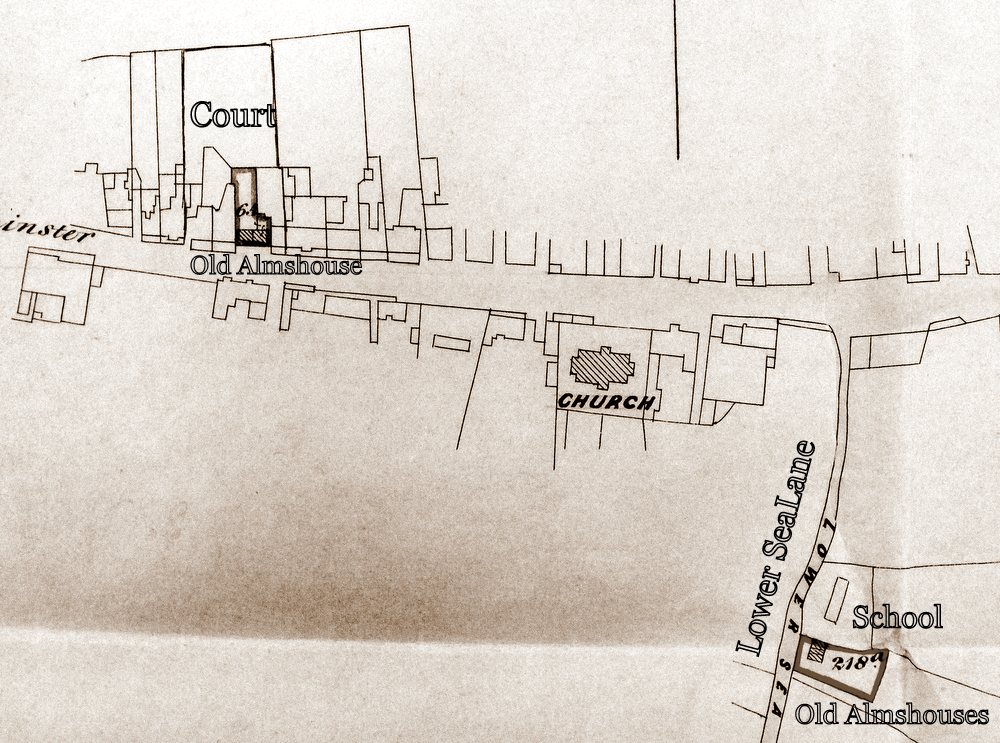
One of the reasons, Mrs Stuart moves to Charmouth was probably the fact that her brother Philip Schalch was the owner of Backlands Farm. The family connection to this farm dates back to 1788 when Rev. Brian Combes had bought it on the death of the Lord of the Manor, Richard Henvill. He was Rector of Catherstone and Charmouth as had been his Father, William who had held the post before him for over 35 years. It consisted of buildings and a large area of farmland to the north of the Street. After Brian's death in 1818 his large personal Estate was left to his five nieces – Frances Catherine Warren, Frances Purlewent, Catherine Purlewent, Jane Purlewent and Mary Purlewent. It was the latter who was to marry Philip Schalch, whose German forebears had opened the foundry at Woolwich Arsenal in the early 18 th century. Land Tax returns for 1825 show it as “Combs Farm”, owned by Warren & Co (the heirs) and rented by James Powell. But by 1840 it is Captain Philip Schalch who is detailed as owner of the 23 acres with a rate of £1-12s.
The complicated interconnected Family tree for the Combes, Schalch`s and Stuarts, is shown below. The members were to be active in the villages affairs for nearly 200 years. But it is Mary Napier Stuart (nee` Schalch) who is most relevant in the history of “The Court”. Mrs Stuart as she is so often referred to in documents of the time was in fact Mary Napier Stuart who had been married to Daniel Stuart. Research into his background has revealed a fascinating story whose life was one of a self made Newspaper owner, journalist and entrepreneur. His will of 1846 detail a long list of properties around Banbury, Oxford and in the centre of London that he owned. Born in 1766 in Edinburgh, he was later to move to London where he made his fortune. Originally a journalist on the Morning Post he went on to pu rchase the newspaper in 1795 and by employing writers such as Samuel Coleridge, Robert Southey and William Wordsworth, increased its status and its circulation to become the largest paper after the Times. In 1813 he married (Mary Napier, daughter of Major Andrew Schalch, of the Royal Artillery), and the following year he bought the lease of 106 Harley Street. By 1817 he had purchased Wykham Park, an estate (in all about 300 acres) near Banbury, which had formerly belonged to the Dashwood family. The family would divide their time between the two properties. It was said that news of the death of his eldest son, a lieutenant in the Army from yellow fever, in the West Indies, aged him and he was to die soon after in 1846. The family property in Harley Street continued to be used by Mrs Stuart after his death, but she sold Wykham Park about the same time that she purchased Rawin Mallock`s house in Charmouth in 1855. She would have been 60 years of age by then and is shown living with her daughter Catherine. In due course she buys the adjoining properties from the Misses Fisher and Sergeant Kinglake. The three cottages were converted into 'The Court' adding a drawing room and kitchen, an inner and outer hall with porch by about 1864. She employed William Eveleigh a builder from Morcombelake and Jessee Rafsey to carry out the carpentry. Sadly Mrs Napier Stuart was blind and Reg. Pavey in his notes on the house tells of an episode whilst the house was being built of scaffolding having to be erected in the stairwell so she could touch and inspect the work being carried out. Unfortunately the house was not as she wanted it as the entrance faced on to the ancient dilapidated almshouses and though she could see the sea she needed to safeguard the view over fields on the other side of the Street. Thus begins an interesting saga that ultimately provided her with what she wanted. For she purchases a field in 1864 on which stood a cow shed belonging to John Hodges a butcher, and goes on to build two almshouses to accommodate six poor people. The site is on the east side of Lower Sea Lane (on the corner of Meadow Way) by the old School. This new building replaced the old one next to her house, which is then demolished, and a coach house constructed on part of it. Both buildings stand today, though the Almshouse has long since been converted into housing.
She then buys part of “Fountain Mead” opposite “The Court” so she can have a view of the sea from her library, from Miss Short, the owner of Charmouth House. It later became known as Court Field and was the site for many years of the Village Club Fair held every Whit Monday. A house behind the War Memorial bears that name to day.
In due course she becomes the largest landowner in the village by paying £2350 to John Purlewent of Milverton, Somerset for her brothers former farm, Backlands in 1870. John is the son of Frances Purlewent, one of the five nieces of Rev. Brian Combes who inherit substantial property in the village. By the time of her death in 1872, aged 77 she is shown as also owning Stonebarrow Farm, the East Cliff and several fields in the Lower Sea Lane. Her daughter, Catherine, then aged 54, inherits her substantial wealth. But her mother ensures she continues residing at “The Court” by stipulating that she must not marry and spend at least four months a year there.
A number of memorials exist to the family in Charmouth church. These include a “window on the birth of Christ by Mrs Stuart of the Court” , and two others in memory of her brother Philip Schalch Esq. The Font “ has a plaque in memory of Mary Napier Stuart - widow of Daniel Stuart of Wykham Park, Oxon. Erected by her daughters Mary & Catherine Stuart and Lady Baynes”.
Her daughter continued to own The Court until her death. She had intended leaving her estate to her nephew Vernon Hugh, son of her brother, Major John Schalch. But he had died in 1877 and it was his widow, Anna Martha Schalch who was to inherit the property in 1891.She had five children and it was to her daughter Mary Elizabeth that she in turn was to leave her property to on her death in 1915.
The 1911 Census provides a snapshot of the family in that year with Anna Martha Schalch, widow as head, born in the Cape of Good Hope, South Africa. Mary Schlach(58), James Hugh Gordon (54) Annie Verner (44) all born in India and unmarried and living with her at The Court.
Mary lives on for another 8 years after her mother and it then passes on to her sister, Annie. The property should have originally been left to James Schalch, their brother, but he was not expected to live after his return from India. Instead he lived for forty years with his sisters and died in 1929 aged 72. Another daughter of Vernon Hugh married Alfred Haggard, brother of Rider Haggard, author of King Solomon's Mine who was a frequent visitor at 'The Court'. When he required names for two of his characters for the novel, “She” that he was writing in 1886, he chose Leo Vincey after Edward Vince the owner of Charmouth Stores (Nisa today) and L. Horace Holly after William Holly, the owner of “Wistaria” who operated the Axminster Bus from there. It was in 1873 that Alice Schalch married Alfred Haggard at Fort William in Calcutta, India where he was a barrister with the Bengal Court of Sessions. They had five children, including Admiral Sir Vernon Harry Stuart Haggard, who became Commander-in-chief of the America and West Indies station, as well as diplomat Sir Godfrey Digby Napier Haggard. In 1880 Alfred and his family arrived back from India and he took on the job of Secretary to a London Hospital. By 1888 he was renting the Limes (now Charmouth Lodge) on the Street. After he died in 1916 his wife, Alice lived at the Court for a while then moved to nearby Beech House where she died aged 74 in 1925
Brass Cross.
To the glory of God and in loving memory of/ANNA MARTHA SCHALCH/died 1915/and of MARY EDITH SCHALCH/died 1924
Window 1 is very ornate and includes two scenes. The upper one depicts St.Philip in conversation with the Ethiopian eunuch, treasurer to Candace,Queen of the Ethiopians.
Lower window shows an elderly woman appearing to be bringing a child in her arms to give to a woman lying in bed The second woman is decidedly unhappy with her hand over her heart. The clothing is biblical, the furnishings Middle Aged.
Over the hand of Philip is the word ESAIA written on an intrusive piece of white glass and, in like fashion, the word BENONI on the bed curtain between the baby's head and that of the woman in the bed. At the bottom of the window - To the Memory of PHILIP SCHALCH and MARY his wife.
Small brass plaque 6" x 4" on West side of font - close to the floor.
In memory of/MARY NAPIER STUART/who died on Whit Monday/20th May 1872/Widow of DANIEL STUART, Esq./of Wikenham Park, Oxon.
23May 1861
Within the last 8 months several important alterations have been made in our Parish Churvh. A very handsome Caen Stone Alterpiece has been erected, the entire edifice,wig the exception of the Gallery, seated a new, all the sittings on the being open and free. Two beautiful stained glass windows have been put in the north aisle, given by Mrs Stuart, proprietress of Schalch's farm, Charmouth and of. Stonebarrow Farm, in the adjoining parish of Stanton St Gabriel's. Mrs Stuart has been a liberal contributor for carrying out other material improvements.
The font in memory of Mary Napier Stuart - widow of Daniel Stuart of Wykham Park, Oxon - erected by her daughters Mary and Catherine Stuart and Lady Baynes.
North Side Also of/CATHERINE STUART/born 7 October 1817 died 8 December 1891/second daughter of the said DANIEL STUART/buried in Willesden Churchyard/and MARY NAPIER STUART, his wife.
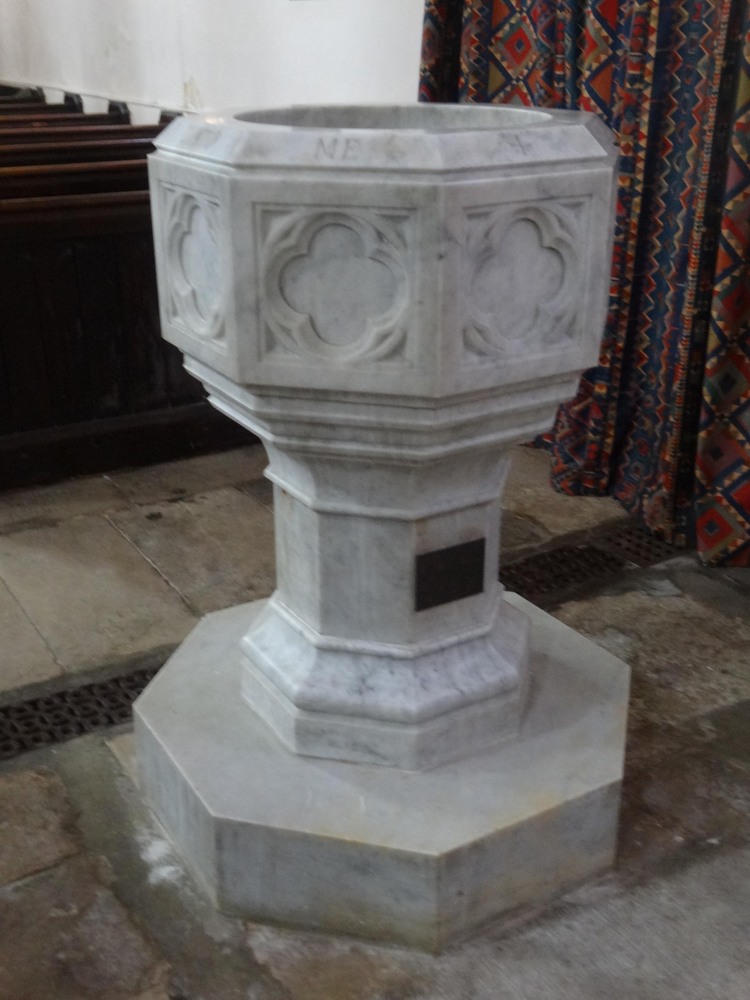
Lower window shows an elderly woman appearing to be bringing a child in her arms to give to a woman lying in bed The second woman is decidedly unhappy with her hand over her heart. The clothing is biblical, the furnishings Middle Aged.
Over the hand of Philip is the word ESAIA written on an intrusive piece of white glass and, in like fashion, the word BENONI on the bed curtain between the baby's head and that of the woman in the bed. At the bottom of the window - To the Memory of PHILIP SCHALCH and MARY his wife.
Stuart had meanwhile supervised the foreign new in The Oracle , the Tory paper still owned by his brother Peter, and in 1796 he had purchased an evening paper, The Courier . He increased the daily sale of the Courier from 1,500 to 7,000. The price was 7 d ., and second and third editions were published daily for the first time. It circulated widely among the clergy.
From 1809 to 1811 Coleridge was an intermittent contributor to Courier . An article which Stuart wrote, with Coleridge's assistance, in 1811 on the conduct of the princes in the regency question provoked a speech from the Duke of Sussex in the House of Lords. Mackintosh contributed to the Courier from 1808 to 1814, and Wordsworth wrote articles on the Spanish and Portuguese navies. Southey also sent extracts from his pamphlet on the Convention of Cintra before its publication.
For his support of Henry Addington 's government Stuart declined any reward. From 1811 he left the management of the Courier almost entirely in the hands of his partner, Peter Street, under whom it became a ministerial organ. In 1817 Stuart obtained a verdict against Daniel Lovell , editor of The Statesman , who had accused him of dishonestly taking money belonging to the Society of the Friends of the People.
In 1822 Stuart sold his interest in the Courier . Stuart gave Coleridge money at later periods. In a correspondence with Henry Coleridge , he contested statements made in print by James Gilmann and Coleridge himself, to the effect that Coleridge and his friends had been exploited by his papers and were inadequately rewarded.
Stuart purchased Wykeham Park, Oxfordshire. He died on 25 August 1846 at his house in Upper Harley Street in London. He had married in 1813.
.jpg)
.jpg)
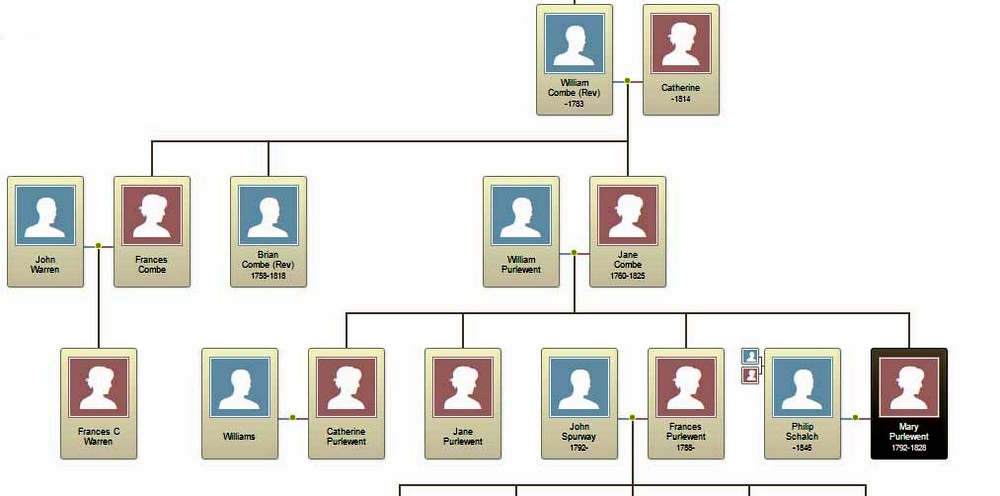
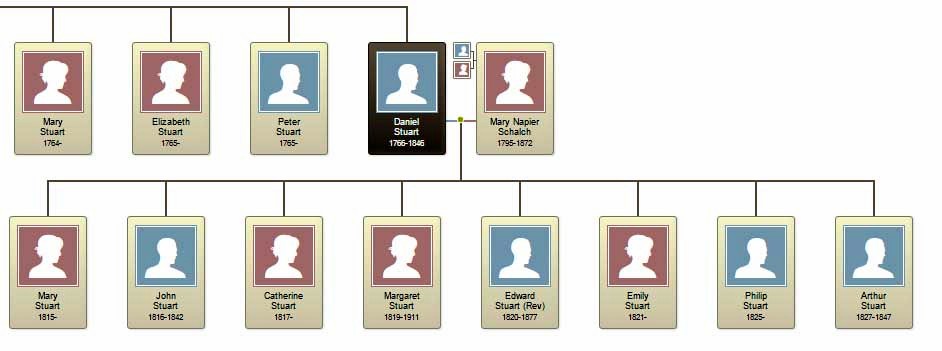
.jpg)
.jpg)
.jpg)
.jpg)
